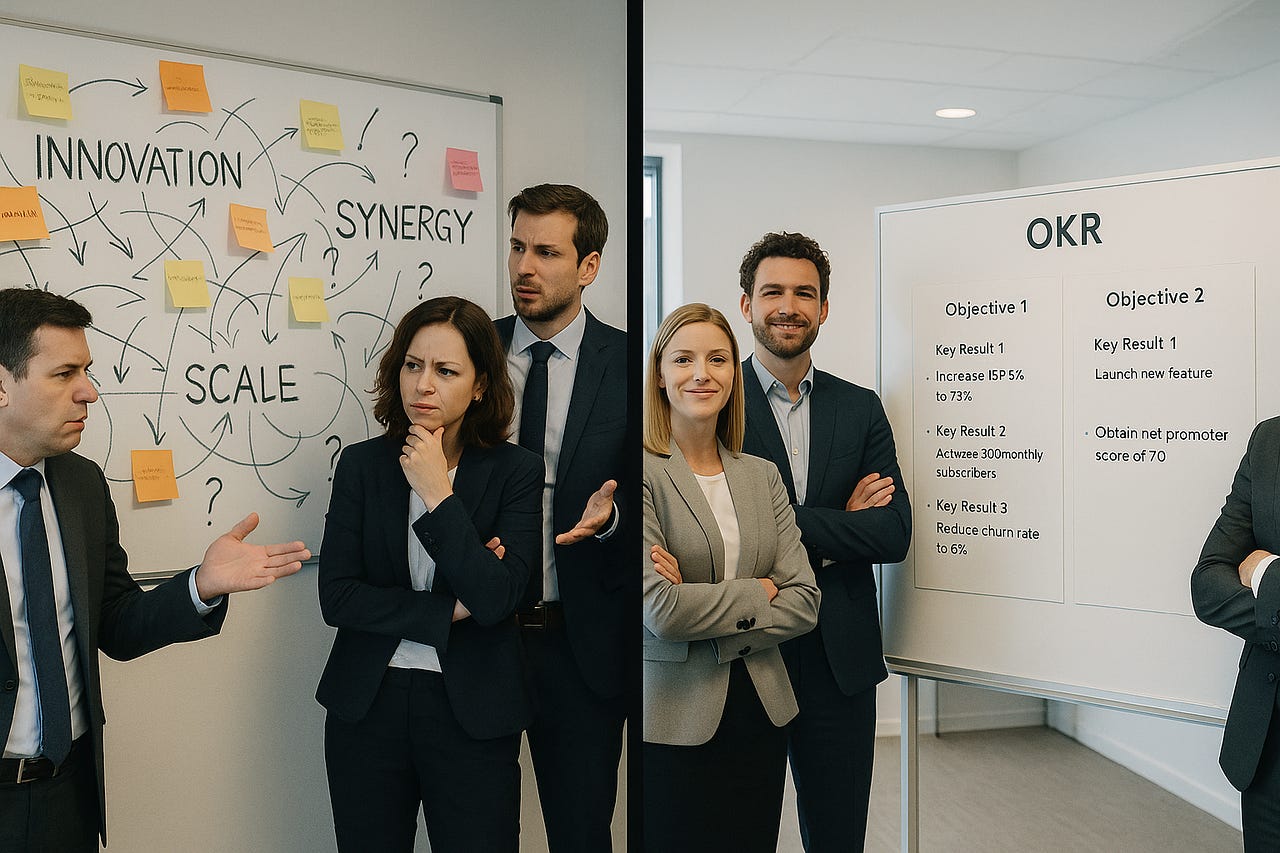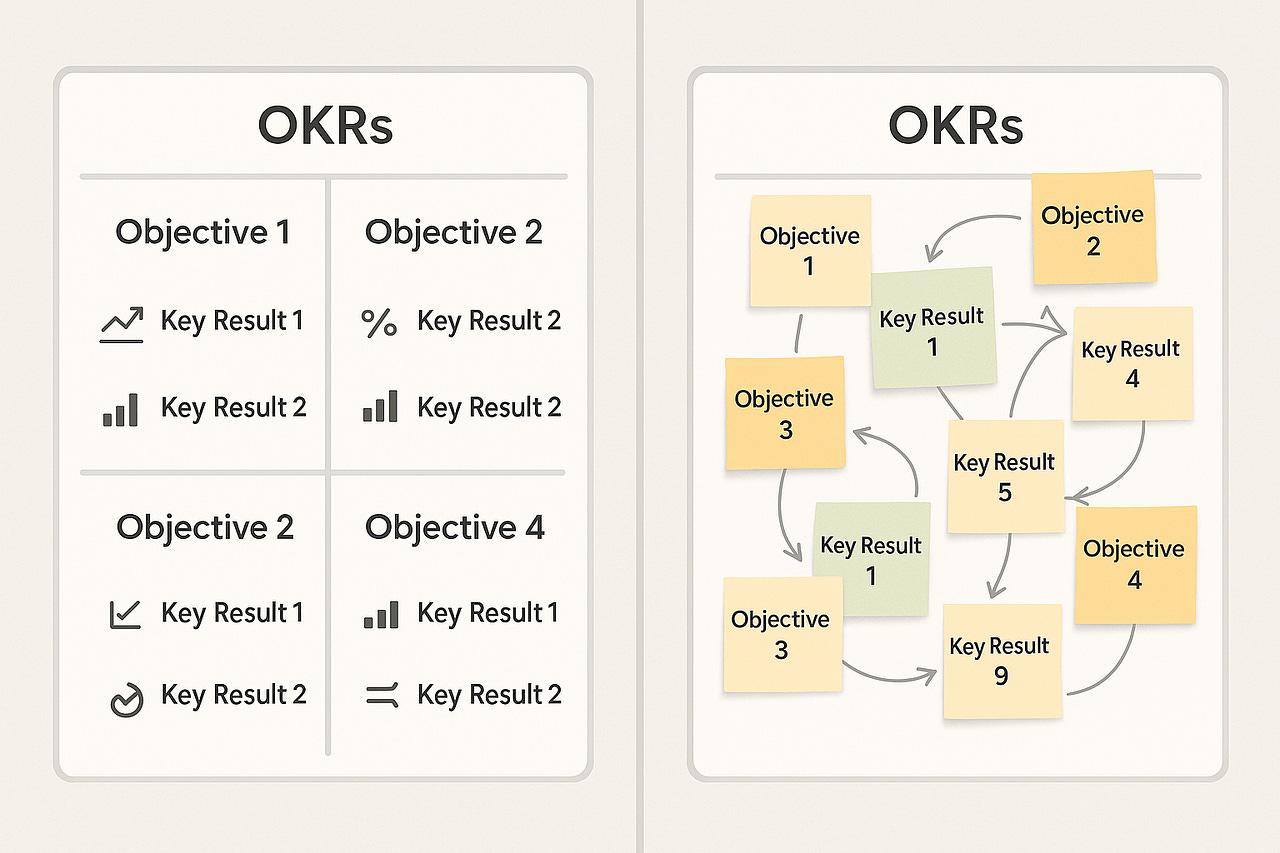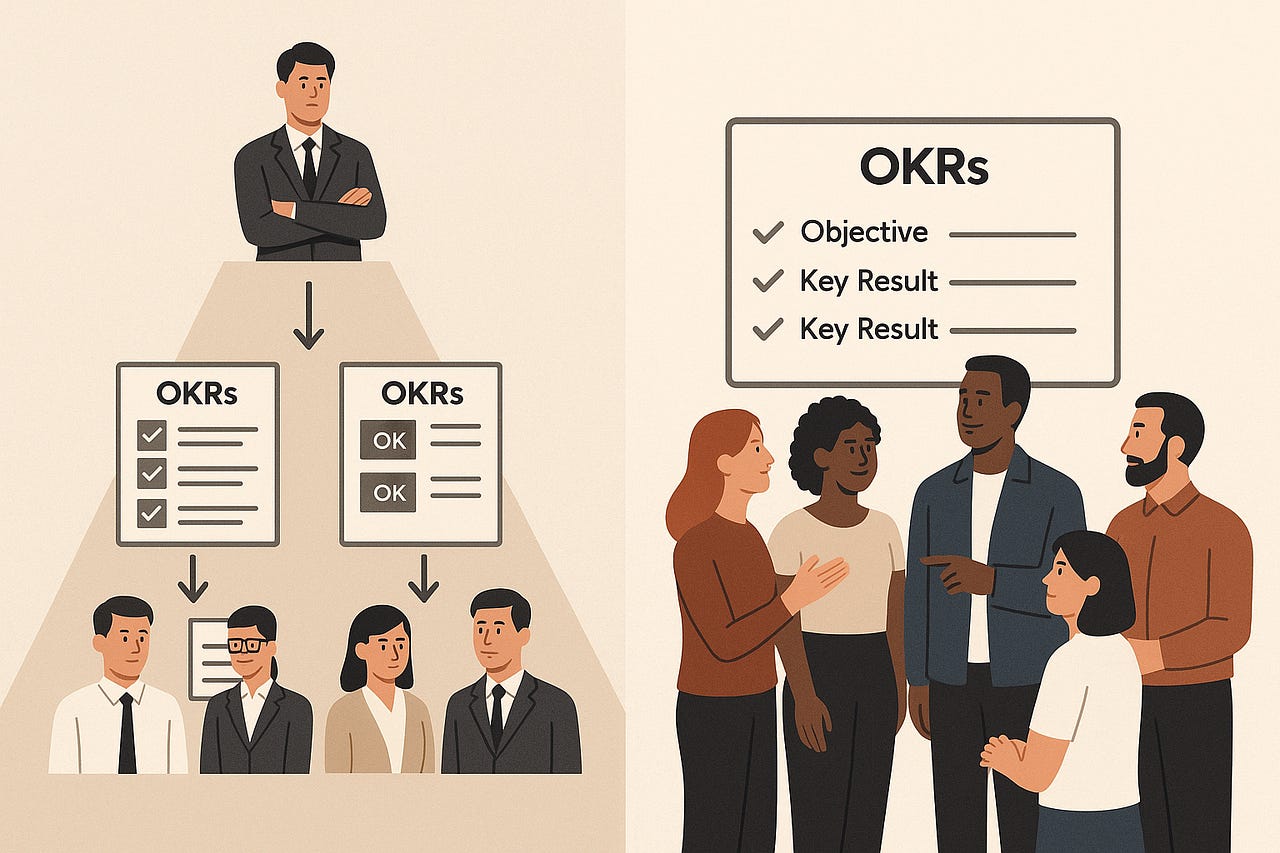You’ve probably heard this one before:
“We use OKRs to stay aligned and focused.”
Lovely.

But when you scratch beneath the surface, what you often find is a bloated task list disguised as strategy. A confused mix of wishful thinking, output-driven vanity, and vague speak that leaves teams just…nodding politely.
So let’s have a real chat about it.
OKRs have the power to bring clarity, ambition, and alignment across an entire organisation.
But most of the time? They’re just fancy containers for poorly formed goals.
Let’s dig into why that is — and how to use OKRs the way they were meant to be used:
To do less, better.
And actually get stuff done.
Follow me on medium: https://medium.com/@jdotharrison
What Even Is an OKR?
At its core, an OKR is just this:
Objective: What do we want to achieve? (Make it inspiring, bold, direction-setting)
Key Results: How will we know we’re getting there? (Make them measurable, outcome-based)
Simple, right?
But here’s the twist most teams miss:
Doing stuff ≠ achieving stuff.
A list of deliverables isn’t a strategy.
A roadmap isn’t an outcome.
Your OKRs should measure the impact of your work, not just the existence of it.
Problem 1: Your OKRs Are Actually To-Do Lists
Let’s look at an example:
Objective: Become a leader in enterprise AI
KR1: Launch v3.0 of our platform
KR2: Migrate 100% of customers to the new version
KR3: Host 5 webinars on enterprise AI
This is output, not outcome. It’s a plan in disguise.
What’s missing?
The ‘why’. The actual intent. The impact we want to see.
Ask “why” to every key result until you land on something that actually matters:
Why launch v3.0? → To increase enterprise adoption
Why migrate customers? → To reduce churn
Why host webinars? → To generate 200 qualified leads
Now we’re talking.
🎯 Outcome-based rewrite:
Objective: Accelerate enterprise AI adoption
KR1: Increase enterprise sign-ups by 25%
KR2: Reduce churn rate to <5% within enterprise segment
KR3: Generate 200 qualified enterprise leads through events
Less action. More impact.
Problem 2: You’ve Got Too Many
You’re not alone. It’s OK. We’ve all done it.
C-levels want OKRs for every strategic goal. Product leads add OKRs for every feature. Teams stack objectives like a supermarket Jenga tower.
Then nobody knows what matters anymore.
Focus is gone. Morale drops.
Suddenly, you’re managing the process, not the priorities.
🔥 Pro tip: Start with 2×2
2 Objectives
Max 2 Key Results per Objective
Want to get fancy later? Fine. But first, prove you can focus.
Problem 3: Top-Down Tyranny
If your OKRs are all coming from above, expect eye-rolls below.
Here’s the truth:
Top-down OKRs create compliance, not commitment.
The most powerful OKRs are co-created.
C-level sets the intent. Teams set the path.
This creates alignment, ownership, and something even more magical:
buy-in
Problem 4: You’re Using OKRs to Measure People
Please, stop doing this.
OKRs are not a performance management tool.
They are not a personal scoreboard.
And they are absolutely not something to tie bonuses or promotions to.
If you want OKRs that are ambitious, honest and useful —
You have to make it safe to fail.
Otherwise you’ll get:
Low-ball targets
Fake success metrics
People quietly ignoring the goals they don’t like
OKRs should drive conversations, not consequences.
So, What Does Good Look Like?
Here’s a checklist to sanity-check your OKRs:
✅ Does the objective clearly state what we want to achieve and why it matters?
✅ Are the key results outcome-based, not action-based?
✅ Are they SMART (Specific, Measurable, Ambitious, Realistic, Time-bound)?
✅ Are there fewer than 5 total?
✅ Were they co-created with the people doing the work?
✅ Will achieving them move the needle?
If you said “no” to more than one, there’s work to do.
Try This: Run an OKR Retro
Here’s your next move. Run a simple retro with your team or in your Community of Practice. Ask:
Which OKRs actually helped us stay focused?
Which ones were noise?
Where did we fall into the “output trap”?
How can we involve more voices next time?
If nothing else, you’ll get better next quarter.
And if you’re lucky, you’ll surface some elephants in the room.
The Wrap-Up
OKRs are not magic.
They won’t fix a lack of vision. They won’t replace strategy. And they won’t force focus where there is none.
But used well?
They align, energise and sharpen teams like almost nothing else.
So take the time to get them right.
And remember…
Doing stuff isn’t the point.
Achieving stuff is.
👀 Next time: How to make your Community of Practice something people actually want to join (or just to do them in the first place)
Follow me on medium: https://medium.com/@jdotharrison





